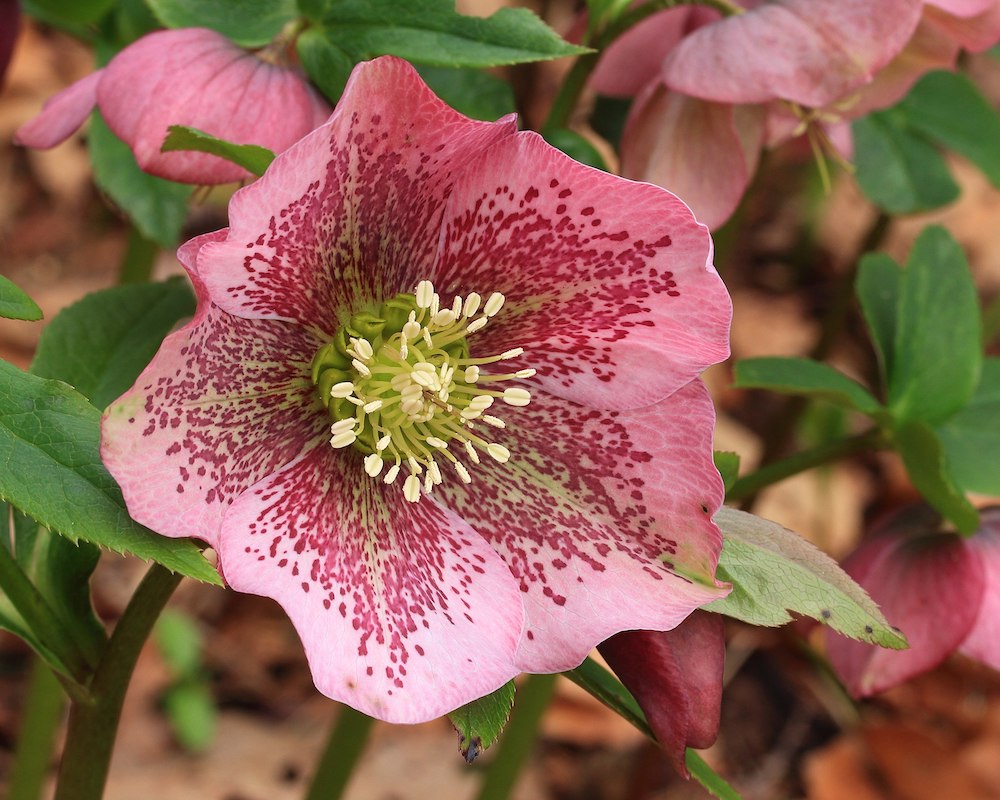Erasmus Darwin observed how some plants have specific insects to pollinate them via adapted mouth parts, and how some insects are camouflaged to protect them against predation:
Fair LONICERA prints the dewy lawn,
And decks with brighter blush the vermil dawn;
Winds round the shadowy rocks, and pansied vales,
And scents with sweeter breath the summer-gales.
[Loves of the Plants, Canto 1, ll. 243-46]
Darwin’s explanatory note: “Lonicera.”
Caprifolium. Honeysuckle. Five males, one female. Nature has in many flowers used a wonderful apparatus to guard the nectary, or honey-gland, from insects. In the honey-suckle the petal terminates in a long tube like a cornucopiae, or horn of plenty; and the honey is produced at the bottom of it. In Aconitum, monkshood, the nectaries stand upright like two horns covered with a hood, which abounds with such acrid matter that no insects penetrate it. In Helleborus, hellebore, the many nectaries are placed in a circle, like little pitchers, and add much to the beauty of the flower. In the Columbine, Aquilegia, the nectary is imagined to be like the neck and body of a bird, and the two petals standing upon each side to represent wings; whence its name of columbine, as if resembling a nest of young pigeons fluttering whilst their parent feeds them. The importance of the nectary in the economy of vegetation is explained at large in the notes on part the first.

A species of Helleborus popularly known as the Spring or Lenten Rose (photograph by Domimicus Johannes Bergsma, via Wikimedia Commons, CC BY-SA 3.0).
Many insects are provided with a long and pliant proboscis for the purpose of acquiring this grateful food, as a variety of bees, moths, and butterflies: but the Sphinx Convolvuli, or unicorn moth, is furnished with the most remarkable proboscis in this climate. It carries it rolled up in concentric circles under its chin, and occasionally extends it to above three inches in length. This trunk consists of joints and muscles, and seems to have more versatile movements than the trunk of the elephant; and near its termination is split into two capillary tubes. The excellence of this contrivance for robbing the flowers of their honey, keeps this beautiful insect fat and bulky; though it flies only in the evening, when the flowers have closed their petals, and are thence more difficult of access; at the same time the brilliant colours of the moth contribute to its safety, by making it mistaken by the late sleeping birds for the flower it rests on.
Besides these there is a curious contrivance attending the Ophrys, commonly called the Bee-orchis, and the Fly-orchis, with some kinds of the Delphinium, called Bee-larkspurs, to preserve their honey; in these the nectary and petals resemble in form and colour the insects, which plunder them: and thus it may be supposed, they often escape these hourly robbers, by having the appearance of being pre-occupied. See note on Rubia, and Conserva polymorpha.
Last modified (image added) 17 February 2021